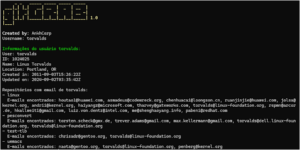Here’s a Quick Look at the Role of ‘Covalent BlockChain Data API’ in Terms of Data Gathering

In this article, we’re going to deep dive into the role of Covalent, the unified blockchain API. So, the first question that arises in all of our minds– What is covalent?
Covalent is the only multi-chain API that provides every single point of on-chain data. This includes granular, historical, and blockchain metadata. Blockchain technologies can change the world, but this potential is left unfulfilled if the data is not accessible. Despite the proliferation of digital assets on the blockchain, granular and historical blockchain data is impossible to access by anyone but the most sophisticated and technically talented individuals. Querying blockchains directly is time-consuming and compute-intensive, while additionally refining and manipulating the data adds another layer of complexity.
Current solutions require developer hours to write additional code to query granular and historical blockchain data. Developers need to be retrained while understanding the complex tools (for example, how to write a subgraph), which can take weeks or months to implement. This is expensive to adopt and slows down the mainstream adoption of blockchain technologies. Covalent is committed to creating the simplest solution possible for developers – no extra code needed, just one API call.
Ultimately, Covalent’s vision is to empower the pioneers of tomorrow by providing the richest and most robust data infrastructure for the entire blockchain ecosystem. Covalent does so through a single, unified API. The key point here is that your private key used to encrypt your data is held with a decentralized storage provider. Encryption plays a huge role in the excellent security and privacy that decentralized platforms have.
It is important to remember that Covalent is an API and requires a developer to integrate the product rather than an end-user consumer-facing product. In that regard, it is like Stripe or Twilio.
First, there are the crypto natives; these are developers building DApps or working for enterprises adopting blockchain technologies. The majority of our customers belong to this bucket today.
The second bucket is regular fintech companies offering crypto products to their existing customers. Every single fintech company is today thinking of their crypto strategy – especially those companies catering to millennials and gen-z. These companies lack in-house blockchain expertise and are looking for a turn-key API solution to shorten their time to market. We have a growing customer segment that belongs to this bucket.
What end-users and the market care about?
According to the researchers, there are four critical needs: –
The first need is data security. End-users care that no one except themselves has access to their files. The second need is system speed. The service needs to offer fast upload and download speeds. The third is consumers are very conscious about pricing. As more and more data is being stored, end-users care deeply about costs. The fourth key requirement is data privacy. It’s important to make the distinction between data security and data privacy.
If you like the site, please consider joining the telegram channel or supporting us on Patreon using the button below.



![Brute Ratel C4 Detected - 54[.]249[.]53[.]66:80 4 brute_ratel_c4](https://www.redpacketsecurity.com/wp-content/uploads/2022/07/brute_ratel_c4-300x300.jpg)
![Cobalt Strike Beacon Detected - 103[.]27[.]108[.]111:18443 5 Cobalt-Strike](https://www.redpacketsecurity.com/wp-content/uploads/2021/11/Cobalt-Strike-300x201.jpg)